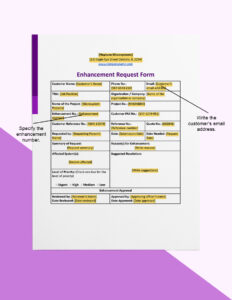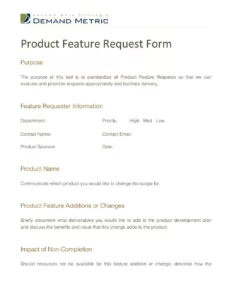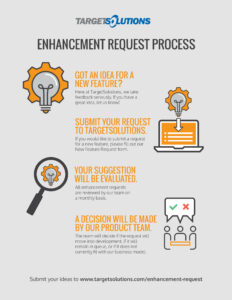Formalizing the process of requesting changes brings several advantages. Clear, comprehensive requests enable developers to understand the desired changes thoroughly, leading to more accurate implementation and fewer revisions. Standardization allows for easier prioritization and tracking of requests, enabling efficient resource allocation. Furthermore, a consistent format facilitates communication between stakeholders, promoting collaboration and a shared understanding of project goals.
This foundation of organized communication provides a springboard for deeper exploration of topics such as best practices for filling out such forms, common pitfalls to avoid, and strategies for integrating the request process into the software development lifecycle. Understanding the structure and benefits of these formalized requests is key to streamlining development and ensuring that software evolves effectively to meet user needs.
Key Components of a Software Enhancement Request
Effective requests for software enhancements rely on a structured approach to conveying necessary information. The following components ensure clarity and completeness, facilitating efficient processing and implementation.
1: Request Title: A concise, descriptive title summarizing the requested enhancement enables quick identification and prioritization.
2: Requestor Information: Contact details of the individual or team submitting the request facilitate communication and clarification.
3: Date of Request: Recording the submission date helps track the request’s progress and prioritize implementation.
4: Current Functionality Description: A clear explanation of the existing software behavior establishes context for the requested change.
5: Proposed Enhancement: A detailed description of the desired improvement, including specific functionalities and expected behavior, is essential.
6: Justification: Explaining the rationale behind the enhancement, such as addressing a user need or improving efficiency, strengthens the request.
7: Expected Impact: Describing the anticipated effects of the enhancement on users, workflows, or other systems provides valuable insight.
8: Priority Level: Assigning a priority level (e.g., high, medium, low) aids in managing development resources and scheduling.
These components, when combined, provide a comprehensive overview of the enhancement, enabling developers to understand, assess, and implement the requested changes effectively. This structure contributes to a more streamlined development process and ultimately, a higher quality software product.
How to Create a Software Enhancement Request Template
Creating a standardized template ensures consistency and completeness in enhancement requests, facilitating efficient processing and implementation. The following steps outline the process of developing a practical and effective template.
1: Define Required Fields: Determine the essential information needed for each request. This typically includes a title, requestor information, date, description of current functionality, proposed enhancement, justification, expected impact, and priority level. Additional fields, such as affected modules or target release version, can be added based on specific project needs.
2: Choose a Format: Select a suitable format for the template, such as a word document, spreadsheet, or online form. The chosen format should facilitate easy completion, storage, and retrieval of requests.
3: Structure the Template: Organize the fields logically to guide users through the process of completing the request. Clear headings and concise instructions enhance usability and ensure completeness.
4: Provide Examples: Include examples of properly completed fields to illustrate expected input and minimize ambiguity. This aids users in understanding the required level of detail and clarity.
5: Establish a Review Process: Implement a review process to ensure the quality and completeness of submitted requests. This may involve designated reviewers or automated validation checks.
6: Communicate and Train: Clearly communicate the purpose and usage of the template to all stakeholders. Providing training on how to complete the template ensures consistent application and maximizes its effectiveness.
7: Iterate and Improve: Regularly review and update the template based on user feedback and evolving project needs. Continuous improvement ensures the template remains relevant and effective.
A well-designed template promotes clear communication, streamlines the request process, and contributes to improved software development outcomes. Consistent application and periodic refinement ensure its ongoing value within the development lifecycle.
Standardized forms for requesting software enhancements offer a crucial mechanism for managing the evolution of software applications. They provide a structured framework for communicating desired changes, ensuring that requests are complete, clear, and actionable. This structure facilitates efficient processing, prioritization, and tracking of enhancements, ultimately leading to improved resource allocation and development outcomes. The key components, including clear descriptions of current and proposed functionality, justifications, and impact assessments, contribute to a shared understanding between stakeholders and enable developers to implement changes effectively.
Implementing and consistently utilizing these structured templates represents a significant step toward more efficient and responsive software development. Organizations that prioritize clear communication and structured processes are better positioned to adapt to evolving user needs, maximize development resources, and deliver high-quality software products that meet and exceed expectations. The ongoing refinement and adaptation of these templates, based on user feedback and project needs, ensures their continued effectiveness in supporting the dynamic nature of software development.


